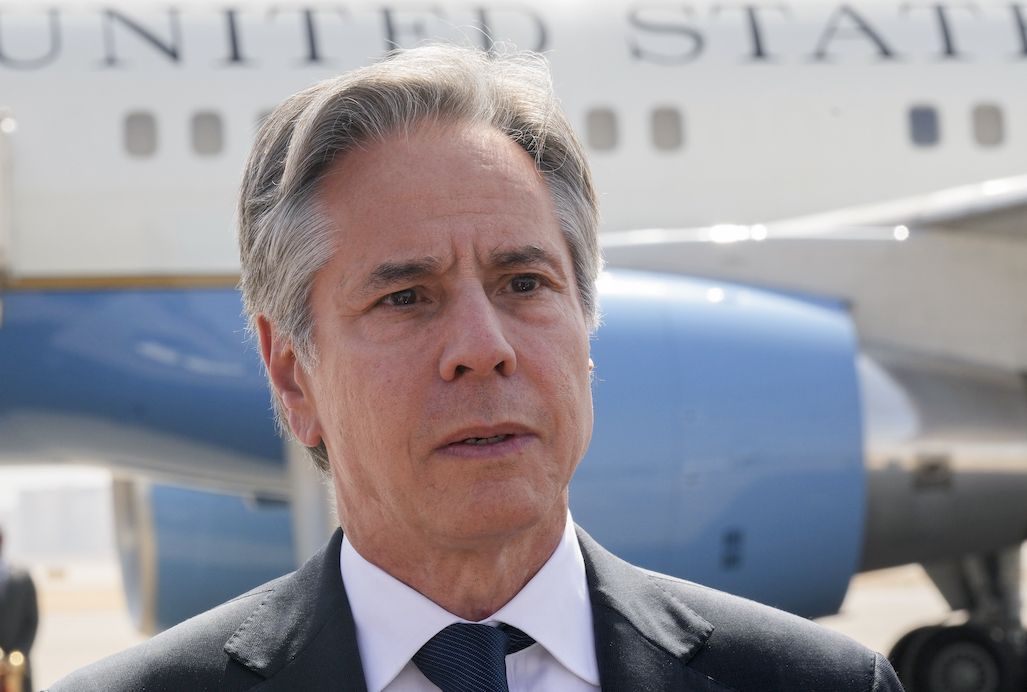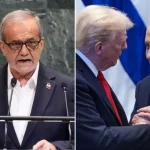

Secretary of State Antony Blinken announced that Israeli Prime Minister Benjamin Netanyahu had reiterated his “commitment” to the ceasefire proposal as the world awaits Hamas’s response.
The secretary is in the Middle East, where he has met and will continue to meet with regional leaders, including those from Qatar and Egypt, which are acting as mediators, along with the United States, between Israel and Hamas.
Over the last day or so, Blinken has met with Egyptian President Abdel El-Sisi, Netanyahu, Israeli Defense Minister Yoav Gallant, Israeli opposition leader Yair Lapid, Palestinian Authority Prime Minister Mohammad Mustafa, and Foreign Minister of the United Arab Emirates Sheikh Abdullah bin Zayed Al Nahyan.
“So everyone’s vote is in, except for one vote, and that’s Hamas. And that’s what we wait for. It is on Hamas to move forward with this proposal or not,” Blinken said in Tel Aviv. “I met with Prime Minister Netanyahu last night, and he reaffirmed his commitment to the proposal. I also had an opportunity to speak to Defense Minister Gallant and other senior Israelis this morning. And I think there is a strong consensus, again, behind moving forward with the proposal, but it really is down to one person at this point.”
The person Blinken referenced is Yahya Sinwar, the head of Hamas’s military. Sinwar is believed to be hiding in Hamas’s underground tunnel system that permeates Gaza. He has eluded Israeli forces, which have hunted for him since the Oct. 7 attack that prompted the war.
Sinwar recently said, “We have the Israelis right where we want them,” to Hamas officials seeking to broker a ceasefire deal, according to the Wall Street Journal.
His comments are aligned with Hamas’s overarching strategy of embedding itself within and underneath civilian populations to force Israel to risk civilians’ safety or not go after the terrorists, though Sinwar’s apparent willingness to prolong the war further demonstrates the terrorist group’s view that it can outlast Israel before the international community pressures Israel to stop its war efforts.
On Monday, the United Nations Security Council voted to approve a U.S.-drafted resolution announcing support for the ceasefire proposal. In response, Hamas issued a statement that appeared to share support for negotiating.
“Hamas emphasizes its readiness to cooperate with the mediators to engage in indirect negotiations on implementing these principles that are consistent with the demands of our people and resistance,” the group said. “We in the Hamas Movement also stress continuation of our endeavor and struggle with all our people to achieve their national rights, foremost of which is defeating the occupation and establishing their independent and fully sovereign Palestinian state, with Jerusalem as its capital, along with the right of return and self-determination.”
Blinken described Hamas’s statement as “a hopeful sign” but noted that the U.S. has not heard Hamas’s formal response yet.
President Joe Biden outlined the proposal on the table on May 31. During previous negotiations, it has taken the U.S. “a few days” to hear Hamas’s response, a National Security Council spokesperson told the Washington Examiner.
The current deal, if agreed upon, would include three phases. The first phase would include the cessation of fighting, the return of female Israeli hostages, the release of likely thousands of Palestinians held in Israeli detention, the surge of humanitarian aid, and the withdrawal of Israeli forces from populated areas of Gaza.
Details of what the second phase would include would be hammered out during the first phase, which would be set to last six weeks, though it would be extended if negotiations for the second phase have not been agreed upon by the end of that cessation period.
Israeli leaders have maintained their goal is to ensure the military defeat of Hamas and the removal of it from power in Gaza, while Hamas wants a permanent ceasefire to ensure it can remain in power. It is unclear how this proposal would solve those differences, though the Biden administration agrees with Israel that Hamas should not be in power once the war is over.
CLICK HERE TO READ MORE FROM THE WASHINGTON EXAMINER
Hamas’s Oct. 7 attack, which resulted in the murders of roughly 1,200 Israeli civilians and the kidnapping of roughly 250 others, prompted Israel’s military operations in Gaza, including widespread destruction throughout the enclave, the displacement of much of the population, and the deaths of tens of thousands of Palestinians, civilians and combatants alike.
Over the weekend, Israeli forces carried out a deadly hostage rescue mission in which they were able to save four hostages, but more than 200 Palestinians were reportedly killed during the operation. The U.S. military was not involved in the mission.







